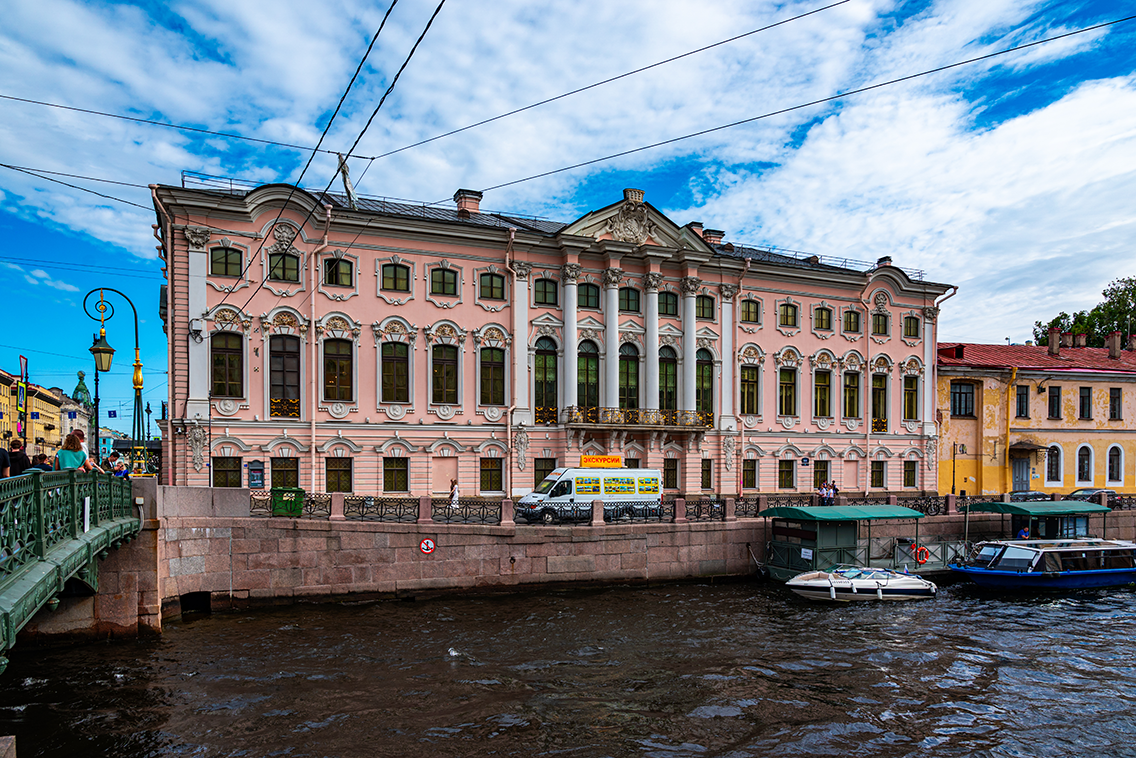 Back
Back
State Russian Museum | Stroganov Palace

Nevsky pr., 17
Stroganov palace to-be must have been put up in the 1720s, when one-storey chambers, belonging either to one of the Stroganovs or possibly the whole family, were constructed by Green Bridge across the Moika River. In 1742 baron Sergey Stroganov bought an incomplete two-storeyed house on the same site. Afterwards, all the buildings were rearranged into one palace complex by an architect Francesco Rastrelli in 1753-1754. The Stroganoff dynasty used to own it until 1918.
Numerous connected with Russian history events took place in Stroganov palace. Its Great Hall received the movers of National Library of Russia foundation in the 1760s. In December 1766 the deputies were elected here in attendance of Empress Catherine II to create The New Statement of Legal Principles.
In 1918 Stroganov palace was nationalized and turned into "People’s memorial house (former Stroganov’s )", while the State Hermitage was responsible for forming its displays. In 1929 the palace premises were given to the All-Union Academy of Agricultural Sciences in order to establish the Plant Science Institute here. This stopped the existence of the palace as a museum. The Stroganovs’ collections of art were divided between different museums of Russia and partly sold abroad.
By the 1930s the palace had already been occupied by several lessees — the main one was “Electric and Sea Trust” belonging to the People’s Commissariat of Shipbuilding. On 4 April 1988 the city council issued an order № 248 “To surrender the former Stroganov palace premises and transfer them under the jurisdiction of the Russian Museum”. The restoration works, held by it in 1989-2014, let the palace facades and interiors be reconstructed.
In 1992, according to the initiative of baroness Helene de Ludinghausen, who is baron Sergey Stroganov’s (1852-1923) grand-niece, the charity “Stroganov Foundation LTD” was established in the U.S. It aims to provide financial support for Stroganov palace restoration programs, as well as other palace museums’ of Saint-Petersburg and its suburbs. In addition, the organization takes part in the reconstruction of Russian churches. The main motive force of the foundation is its permanent head and treasurer Pierre Merle.




 Listen
Listen  Download
Download